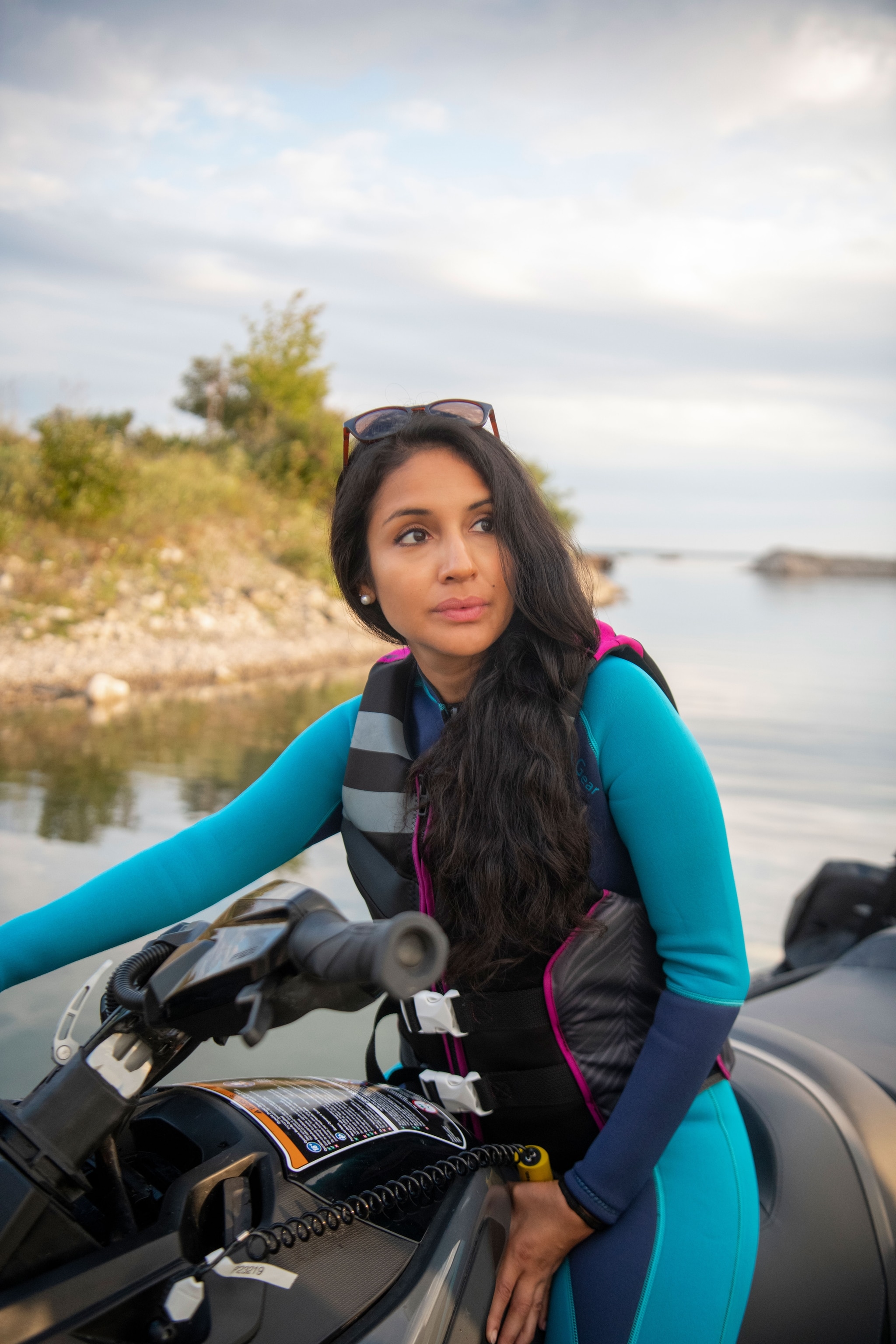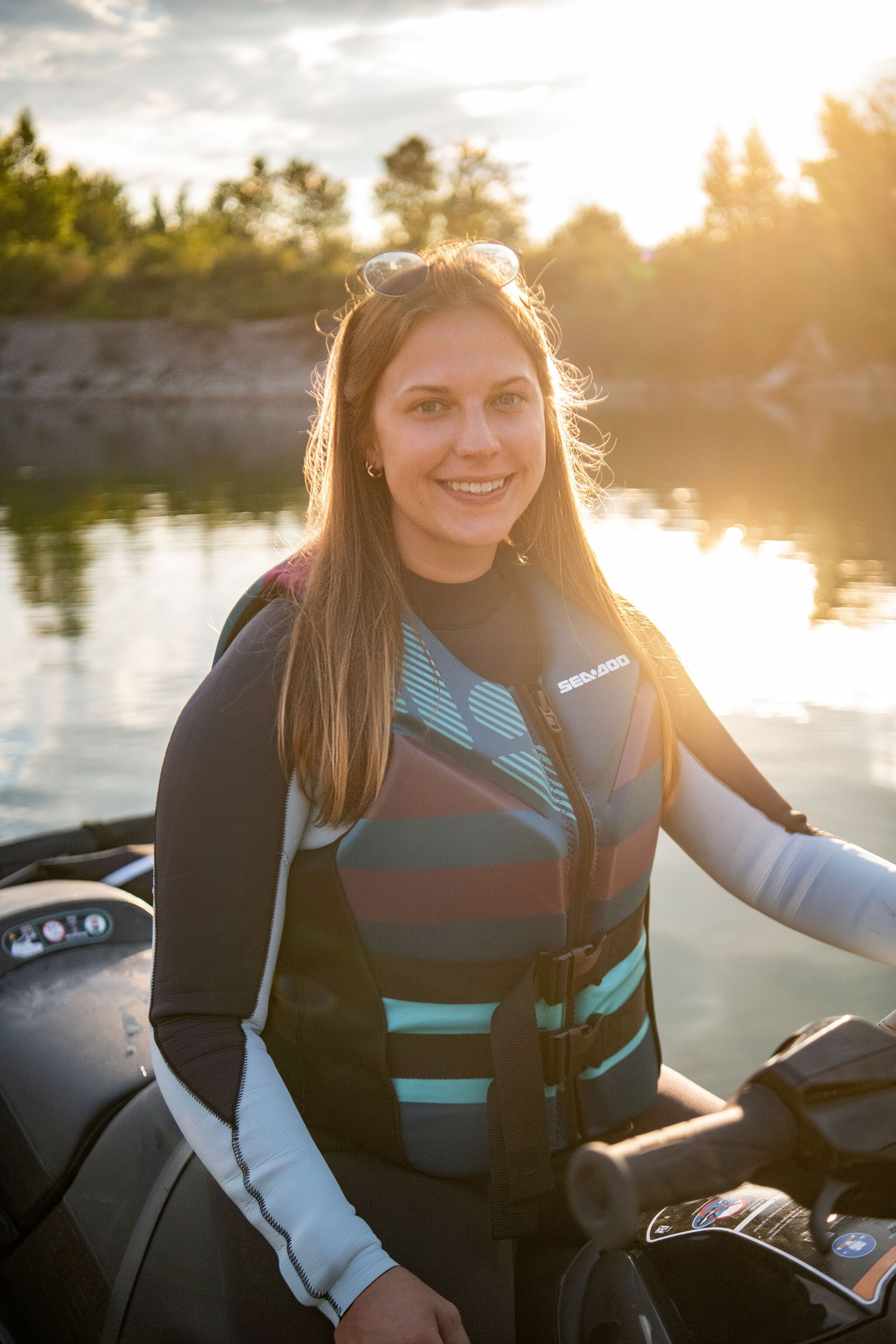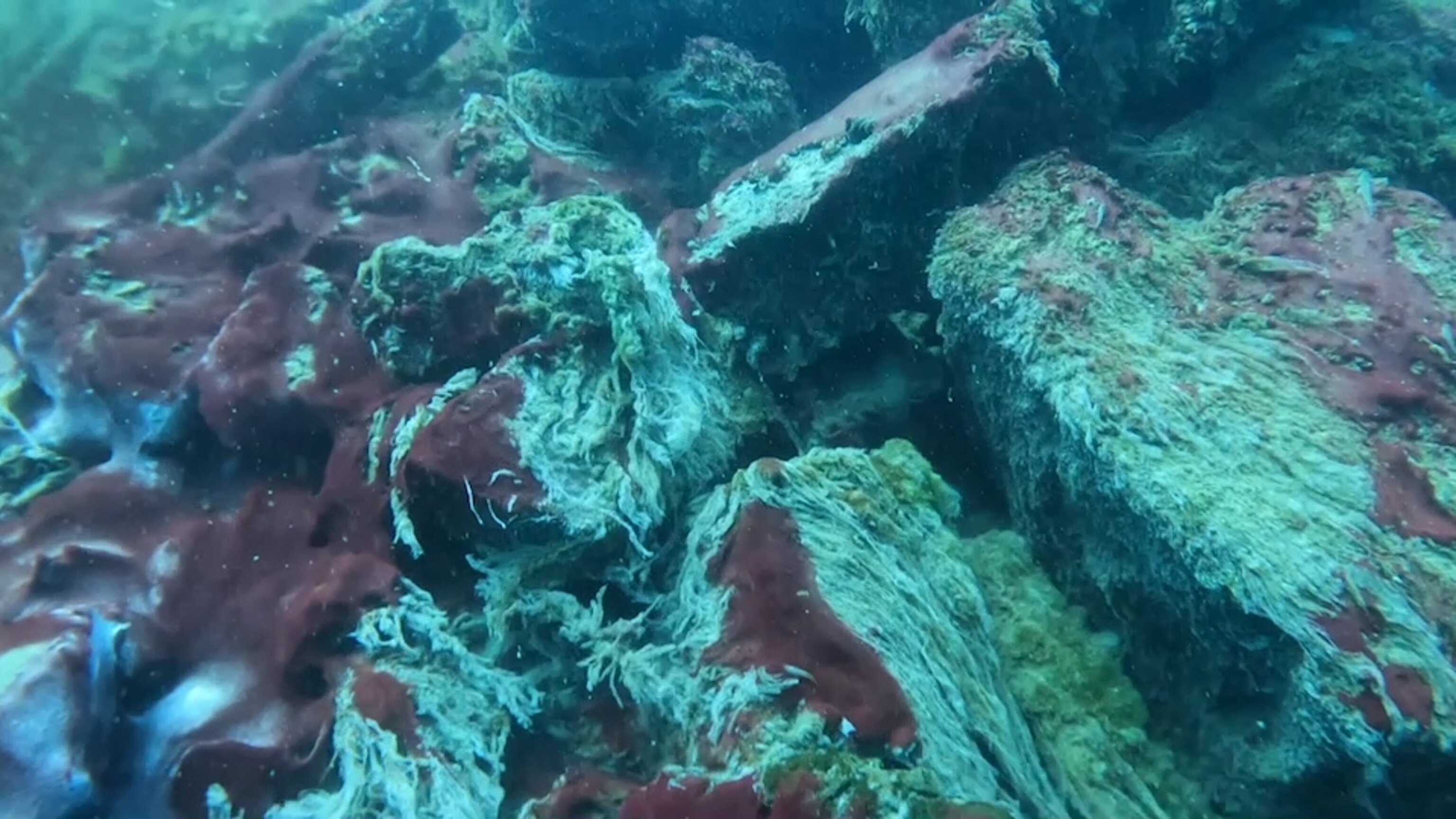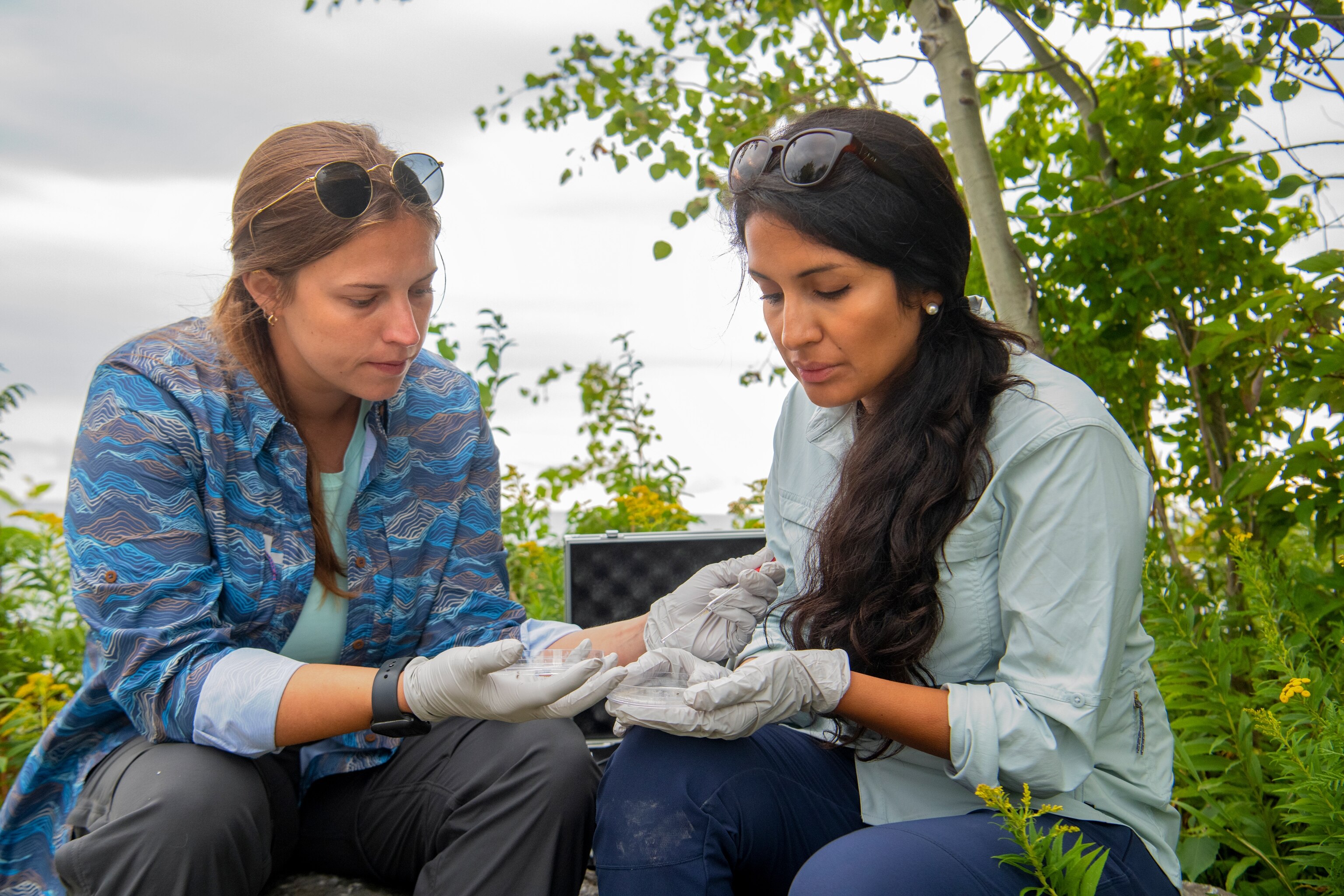Diving for microbial time capsules of ancient Earth
National Geographic Explorer and researcher, Rosa Vásquez Espinoza, traverses the depths of Lake Huron to understand how life on Earth evolved and what we can do to preserve it.
Growing up in a remote area of Peru, chemical biologist and National Geographic Explorer Rosa Vásquez Espinoza relied on water as a mode of transportation. She and her family traversed the Amazon River in a peke peke traditional Peruvian boat, looking for medicinal plants and visiting family members. “My relationship with water was inevitable,” she says. “We needed water to go places.”
The river was also essential to the practice of traditional medicine, which Vásquez Espinoza learned from her grandmother. She was motivated to study chemical biology because she wanted to understand the science behind how plants healed. “What fascinated me was learning that the invisible microbes that live on a lot of these plants, or even the water that feeds into the plants, are the ones producing the medicine,” she says.
Today Vásquez Espinoza is a postdoctoral researcher at the University of Michigan. She and her research collaborator and doctoral student Lauren Hart are focused on the impact of cyanobacteria, also known as blue-green algae, on the Great Lakes ecosystem as well as the toxins and medicinal compounds they may produce. To collect microbial samples, they explore Lake Huron’s Thunder Bay on Sea-Doo watercraft, which allow them to carry field equipment like microscopes and to travel fast and light.


Lake Huron is oligotrophic, meaning that it has very low levels of plant nutrients and high levels of oxygen, which makes the water clear and blue. The biodiversity of the lake is low in some areas and high in others, so the researchers need to travel all 3,827 miles of the lake’s coastline to collect diverse samples. “The bottom of Lake Huron is actually old ocean floor, so-called evaporites, and you can see that as evidenced with the famous Petoskey stones that we see on [Michigan] beaches,” says Vásquez Espinoza.
The water in the Middle Island Sinkhole of Lake Huron is chemically more like the ocean than the other Great Lakes. “That old ocean floor sometimes has ground water full of sulfur that leaks out of the ground and sits on the bottom of Lake Huron,” says Vásquez Espinoza. “And so these cyanobacteria, they like to live amongst that sulfur-rich ground water and thrive there in something called a cyanobacterial mat.”
Vásquez Espinoza is particularly interested in purple cyanobacteria, and she’s part of a large collaboration with other organizations including the NOAA Thunder Bay Marine Sanctuary and the Max Planck Institute for Marine Microbiology in Germany to study the cyanobacterial mat. They’re studying how the ancient lake may have supported the microbial communities that generated oxygen to make Earth habitable. “Purple cyanobacteria could be key to learning more about how life [evolved] on Earth, based on where we find them and some hypotheses that we have developed so far,” she says.

Cyanobacteria were the first organisms to start producing oxygen, so they enabled all other life on the planet. They have adapted to many extreme environments to survive over time. Vásquez Espinoza says she’s found them in the Boiling River—which is so hot that it kills everything that falls into it—in the Peruvian Amazon as well as the sinkhole in Lake Huron. But just as they were the basis for life on this planet, they can also potentially destroy it. If all water systems were heavily contaminated by the toxins cyanobacteria produce, it would have serious effects on human health. Fish would also get sick, and the birds, marine life, and land mammals who eat the fish and drink the water would also be harmed. There’s evidence that the toxins the microorganisms produce can also be released into the air, so just breathing near contaminated water without masks can be dangerous, and cyanotoxin aerosols have been linked to neurodegenerative diseases.
“In one drop of water, we can gather a lot of information about our past and evolution of life on our planet. But we can also collect a lot of information that helps us predict how climate change and pollution is impacting our current waters,” says Vásquez Espinoza.

For example, understanding how life evolved on Earth can predict how carbon cycling in lakes might respond to climate change, and water samples that contain microplastics can show how far plastic pollution travels by sea and air, even to the most remote areas of the Amazon Rainforest. What scientists learn from the water from Peru to Michigan can inform how to protect fragile ecosystems.
“I used to want to go to space and be an astronaut, because I thought it was fascinating to think that there could be life somewhere else. But then I realized how much microscopic life we have on this planet, and yet we've never seen it, and we don't know how it impacts us on a daily basis and how we impact it. That's what drives me, just going a step further and unlocking all that knowledge, because I think that has been the missing key to better conservation of Earth.”